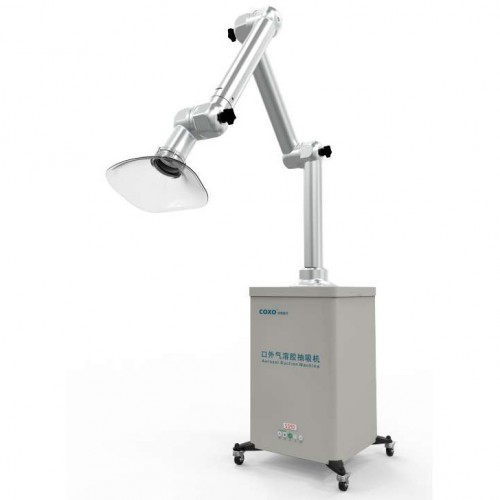Tips on Transmission Precautions for Dental Aerosols
Understanding the risk posed by aerosols will help minimize the possibility of infection transmission during dental procedures.
AEROSOL DIFFERENTIATION
Aerosols are differentiated based on particle size: spatter (> 50 µm), droplet (≤ 50 µm), and droplet nuclei (≤ 10 µm).In dental settings, 90% of the aerosols produced are extremely small (< 5 µm).Spatter, being the larger particle, will fall until it contacts other objects (e.g., floor, countertop, sink, bracket, table, computer, patient or operator).Droplets remain suspended in the air until they evaporate, leaving droplet nuclei that contain bacteria related to respiratory infections.9,14 Droplet nuclei can contaminate surfaces in a range of three feet and may remain airborne for 30 minutes to two hours.If inhaled, the droplet nuclei can penetrate deep into the respiratory system.Furthermore, the susceptibility of developing an infection is influenced by virulence, dose and pathogenicity of the microorganisms, along with the host’s immune response.

PREVENTION AND REDUCTION
Recommended transmission-based precautions should be incorporated into daily practice to minimize aerosol production and prevent disease transmission from emitted particles. The risks of dental aerosols can be reduced with the use of high-velocity air evacuation and preprocedural antimicrobial mouthrinses, as well as by flushing waterlines at the beginning of the workday and between each patient, wearing personal protective equipment (PPE), and using air purifications systems.
AIR AND WATERLINE PRECAUTIONS
Water in the dental treatment setting should meet U.S. Environmental Protection Agency standards for drinking water (< 500 colony forming units/ml of heterotrophic water bacteria).To ensure the delivery of safe water, manufacturer instructions for use (IFU) should be followed for the dental unit and any waterline treatment products.Water-quality monitoring can be conducted by an outside laboratory or internally with in-office testing kits.The use of independent reservoirs, chemical treatment, filtration, sterile water delivery systems, or combinations of technologies is an additional means for improving and maintaining dental water quality.

PERSONAL PROTECTIVE EQUIPMENT
Standard precautions, as outlined by the CDC, involve the use of PPE.Primary PPE includes donning properly fitting gloves and surgical masks, protective eyewear with solid side shields or face shield, and protective clothing/disposable gowns.This equipment should be worn whenever there is a potential to encounter spray or spatter during patient care, and while disinfecting the treatment area (as noted, bioaerosols remain suspended for 30 minutes to two hours posttreatment).
VENTILATION MANAGEMENT
Aerosol control with extraoral aerosol suction machine in confined, poorly ventilated spaces where the air exchange with filtration cannot be successfully applied presents a challenge.Another hurdle is to decrease the indoor concentration of bioaerosols.While some indoor air purification techniques aim solely at reducing aerosol concentrations, others are designed to inactivate viable bioaerosols.Strong evidence demonstrates ventilation in a practice setting can impact the spread of airborne infections.
CONCLUSION
Due to the risk of infectious transmission posed by dental aerosols, transmission-based precautions should be a key element of daily practice. Patients and practitioners are regularly exposed to tens of thousands of aerosols generated during procedures,30 and this exposure increases the potential for respiratory infections.To ensure patient and provider safety, oral health professionals should abide by the latest CDC guidelines and recommendations. This includes using HVE or an isolation-and-evacuation device, providing preprocedural mouthrinses, maintaining dental unit water quality, and wearing proper PPE.To further reduce risks and improve air quality, air cleaning systems can be employed.Ultimately, combining multiple methods may be the most effective approach for managing dental aerosols.
Previous:What should consider when choosing a uv sterilizer cabinet
